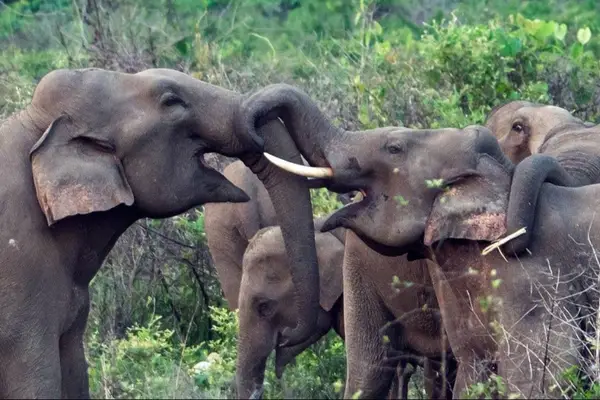The Central government has introduced the Captive Elephant (Transfer or Transport) Rules, 2024, to liberalize regulations governing the transfer of elephants within or between states.
- These rules aim to facilitate the transfer of captive elephants under specific circumstances, ensuring their better upkeep and welfare.
Key Provisions of the Rules:
Conditions for Transfer:
- Elephants may be transferred under circumstances where the owner is unable to maintain them adequately, or when it is “deemed fit and proper” by the Chief Wildlife Warden (CWLW) for the elephant’s better upkeep.
- Owners must submit an application to the area’s Deputy Conservator of Forests (DCF) where the elephant is registered, detailing the current and proposed facilities for the elephant’s housing.
- The decision for transfer within or between states is subject to verification of the elephant’s health and suitability of its current and prospective habitats.
- These rules grant CWLW the authority to approve or reject such transfers, with exceptions for pre-existing ownership certificates, excluding calves born from captive elephants.
Health Certification and Approval:
- Before any transfer within the state, the elephant’s health must be confirmed by a veterinarian, and suitability of prospective habitats must be assessed by the DCF.
- The DCF will prepare a report and forward the application to the state’s CWLW for examination within fifteen days.
- The CWLW has the authority to accept or reject the application based on the report within seven days.
Transfers between states:
- For transfers involving moving elephants outside of a state, similar conditions apply.
- In the case of transfers between states, the donor state’s CWLW will forward the application and report to the recipient state’s CWLW for examination within fifteen days.
Genetic Profile Registration:
- Before the transfer takes place, the elephant’s genetic profile must be registered with the Ministry of Environment, Forest and Climate Change.
Transport permission:
- Elephant transfers must be completed within three months of receiving permission.
- The transport permit is valid for only one month.
Transportation Requirements:
- A mahout and an assistant should accompany the elephant.
- A health certificate from a veterinary practitioner confirming the elephant’s fitness for transport and absence of musth or infectious diseases is necessary.
- Transport should occur after the mandatory quarantine period, if advised by the veterinary practitioner in cases of contagious disease.
- The elephant must be adequately fed and given water before loading.
- Provision for food and water for the elephant during the journey should be made.
- Tranquilisers/sedatives may be used as per prescription by the veterinary practitioner to manage nervous or temperamental elephants.
Amendments to Wildlife Protection Act:
- Previously, the Wildlife Protection Act prohibited the trade in both wild and captive elephants until August 2022.
- Amendments introduced an exemption allowing the transfer of captive elephants, with ownership certification being a prerequisite for movement.
About Indian Elephant (Elephas maximus):
- The Indian elephant (Elephas maximus indicus) is a subspecies of the Asian elephant that is native to mainland Asia.
- The Indian elephant, primarily found in India, also inhabits other countries in the Indian subcontinent such as Nepal, Bangladesh, Bhutan, and Myanmar.
- Additionally, it can be found in Southeast Asian nations like Thailand, Malaysia, Laos, Cambodia, and Vietnam, with smaller populations in China.
- In India, Karnataka has the highest population of elephants in India, with around 25% of the country’s elephants.
Characteristics & habitat:
- It is smaller than the African elephant, with a convex back and the highest body point on its head.
- Female elephant has a gestation period is about 22 months, the longest gestation period of any animal.
- It inhabits grasslands, dry deciduous, moist deciduous, evergreen and semi-evergreen forests across the range.
Conservation status:
- IUCN Red List: Endangered.
- Indian Wildlife (Protection) Act 1972: Schedule I.
- CITES: Appendix I
Ref:Source
| UPSC IAS Preparation Resources | |
| Current Affairs Analysis | Topperspedia |
| GS Shots | Simply Explained |
| Daily Flash Cards | Daily Quiz |



